Key takeaways
- Science fiction props blend creativity and craftsmanship, allowing enthusiasts to feel part of imaginative worlds.
- Essential tools for prop painting include various brushes, airbrushes, masking tape, and good lighting to achieve a professional finish.
- Preparing the prop’s surface through cleaning, sanding, and masking is crucial for a successful paint job.
- Weathering techniques and details enhance realism, turning paint jobs into storytelling tools that convey history and character.
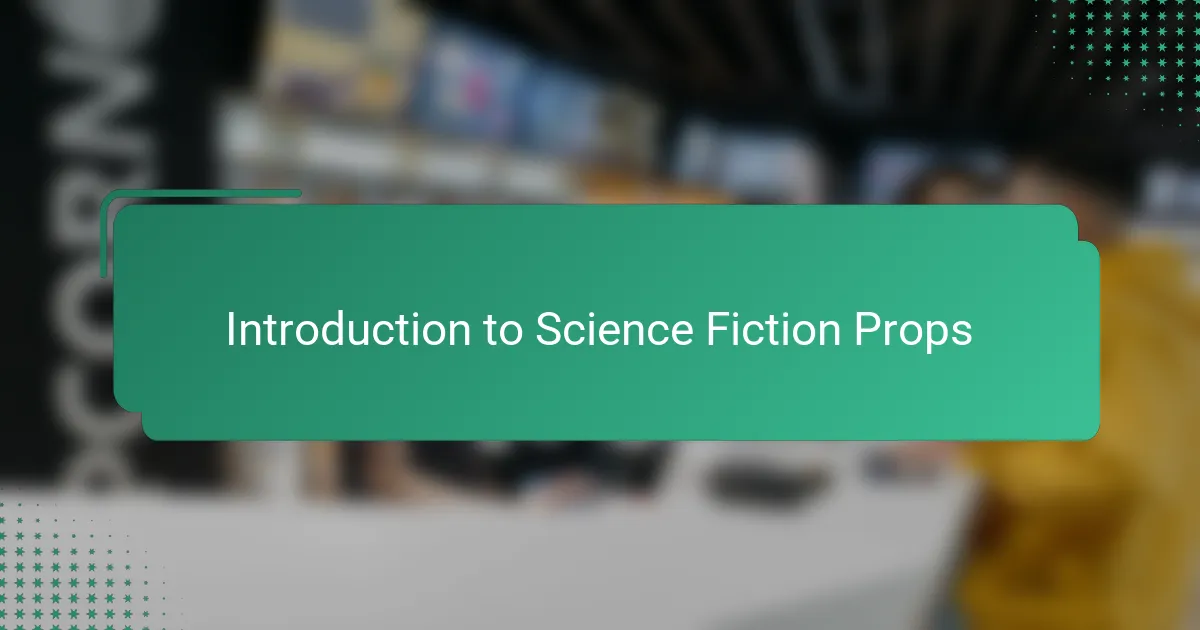
Introduction to Science Fiction Props
Science fiction props have always fascinated me because they bring imaginative worlds to life in a tangible way. Have you ever wondered what it’s like to hold a piece of a story that exists only in someone’s mind or on a movie screen? That moment when you grip a prop, it suddenly feels like you’re part of that universe.
What I find truly exciting is how these props blend creativity with craftsmanship. Each one tells a story not just through its design, but through the process of making it real. For me, painting a blaster or assembling intricate parts is like stepping into the shoes of a creator, turning abstract ideas into something you can see and touch.
Science fiction props are more than just collectibles—they’re a bridge between fantasy and reality. They invite us to imagine new possibilities and inspire us to explore our own creativity. Isn’t it amazing how a simple object can spark such wonder and connection?
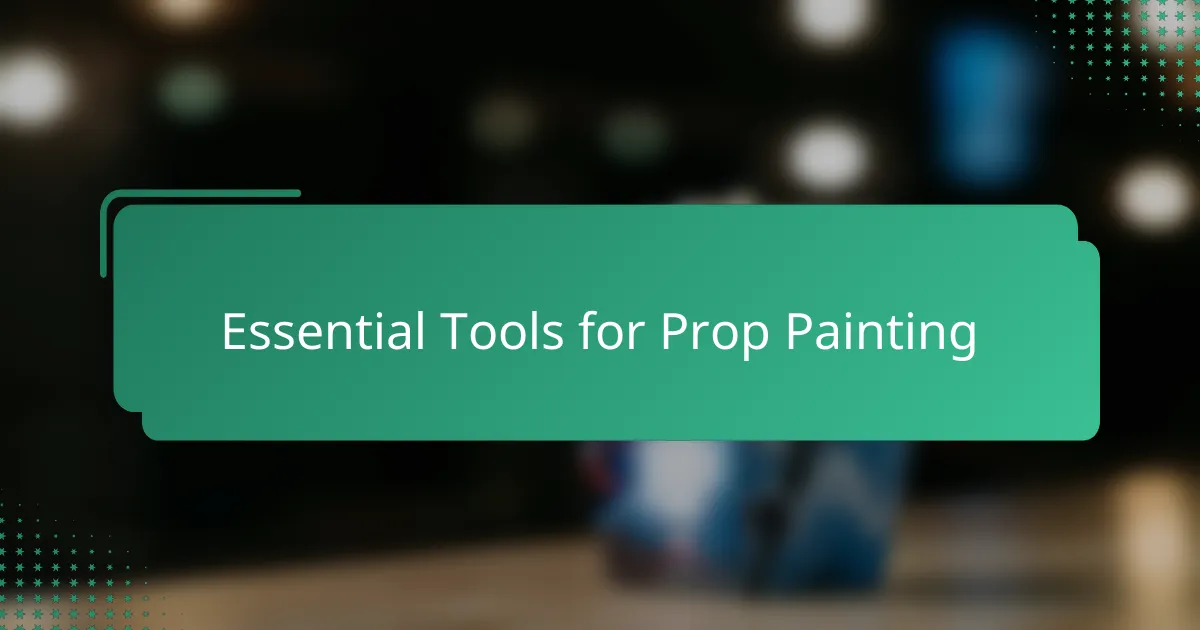
Essential Tools for Prop Painting
When I first started painting my Boba Fett blaster, I quickly realized that having the right tools made all the difference. Brushes in various sizes gave me the control I needed for fine details and broader strokes, while a quality airbrush opened up possibilities for smooth gradients and weathering effects. Have you ever tried painting intricate sci-fi elements without the proper brushes? It’s frustrating, to say the least.
Another tool I can’t live without is masking tape—especially when working on those sharp edges and layered colors that make the blaster pop. It’s amazing how something so simple can help keep your lines crisp and the paint where it should be. Plus, sanding blocks helped me prep surfaces and smooth out imperfections, which really brought out that professional finish.
Of course, good lighting and a well-ventilated workspace were key for me, too. I learned the hard way that painting in dim light can cause you to miss spots or mess up colors, and ventilation is crucial when working with spray paints or primers. These essentials might sound basic, but trust me, they’re what separate a good paint job from a great one. What tools do you think are must-haves when starting your own prop project?
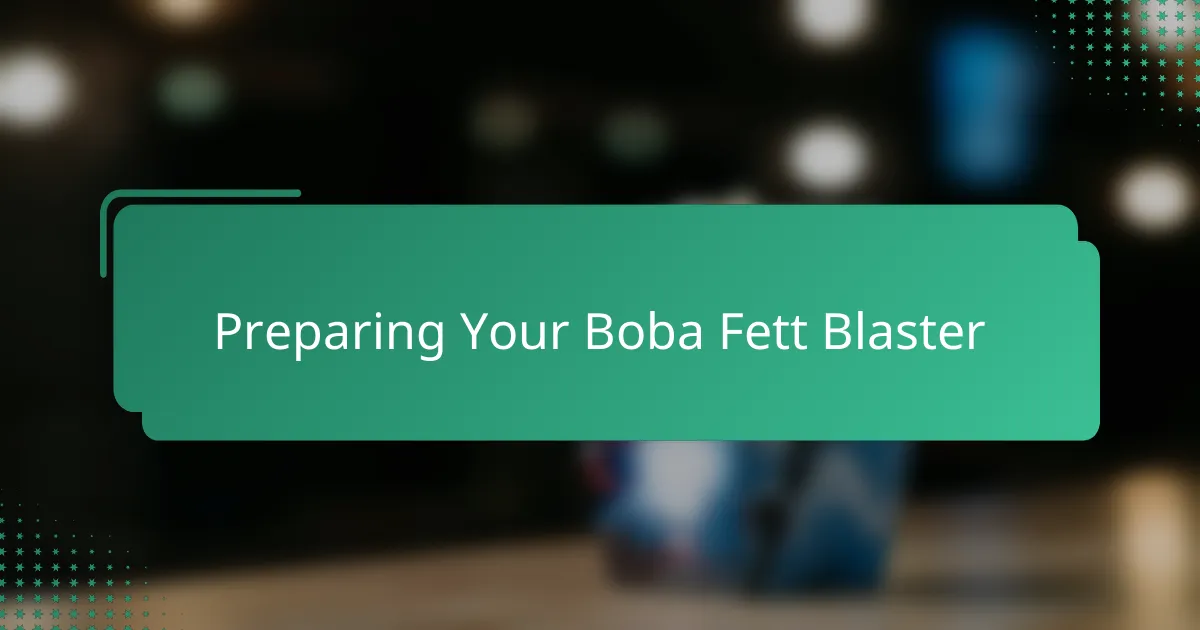
Preparing Your Boba Fett Blaster
Before I even picked up a brush, preparing my Boba Fett blaster was all about getting the surface ready. I started by giving it a thorough clean—dust and oils can wreck a paint job faster than you think. Have you ever painted over a greasy surface? The paint just doesn’t stick right, and that’s frustrating when you’re aiming for perfection.
Next came light sanding. I used fine-grit sandpaper to gently roughen up the smooth plastic. This step might seem tedious, but it’s crucial for helping the primer and paint grip the blaster better. I remember running my fingers over the surface after sanding; it felt gritty in a good way, like the blaster was ready for its transformation.
Masking was another small but vital step. Wrapping tape around areas I wanted to keep paint-free took patience, but it saved me multiple times from accidental smudges or color bleeds. Have you ever tried freehanding delicate lines without masking? I learned the hard way that a little prep goes a long way in making the final result look sharp and clean.

Choosing the Right Paints
Choosing the right paints was one of the biggest decisions I faced when tackling my Boba Fett blaster. I quickly realized that not all paints are created equal—some offer vibrant colors but lack durability, while others stick well but dull too fast. Have you ever been disappointed by a paint that looked great at first but peeled or chipped before you finished your project? That’s exactly what I wanted to avoid.
For my blaster, I chose acrylic paints because they strike a nice balance between ease of use and long-lasting results. They dry quickly, which kept me from waiting forever between layers, and they gave me the flexibility to build up colors without clumping. I also picked up a few metallic shades to capture that weathered, battle-worn look that Boba Fett’s gear is famous for.
What really made a difference, though, was experimenting with primers and sealers. Priming the surface helped the paint adhere better and made the colors pop, while sealing protected the final finish from scratches and fading. I found myself constantly tweaking which combinations worked best—painting a prop isn’t just about slapping on color; it’s about creating a convincing illusion that stands the test of time.

Step-by-Step Painting Process
Starting the painting process, I laid down a base coat to unify the blaster’s surface. This step felt like setting the stage for the story I wanted to tell with colors and details. Have you ever felt that initial layer is almost like a blank canvas brimming with potential? For me, it’s the moment the prop begins to transform from plastic to something alive.
Next came the layering—applying color in thin, controlled coats to build depth and texture. I found patience was key here; rushing the paint only led to streaks or clumps. Using an airbrush for smooth gradients and a fine brush for tiny accents helped bring Boba Fett’s rugged, used look to life in a way that thrilled me.
Finally, I tackled the weathering effects—my favorite part. Adding scratches, rust, and scuff marks felt like giving the blaster a history and personality. I remember holding the piece up to the light, imagining the battles it had ‘seen.’ Have you ever tried weathering? It’s where your imagination really takes over, turning paint into storytelling.
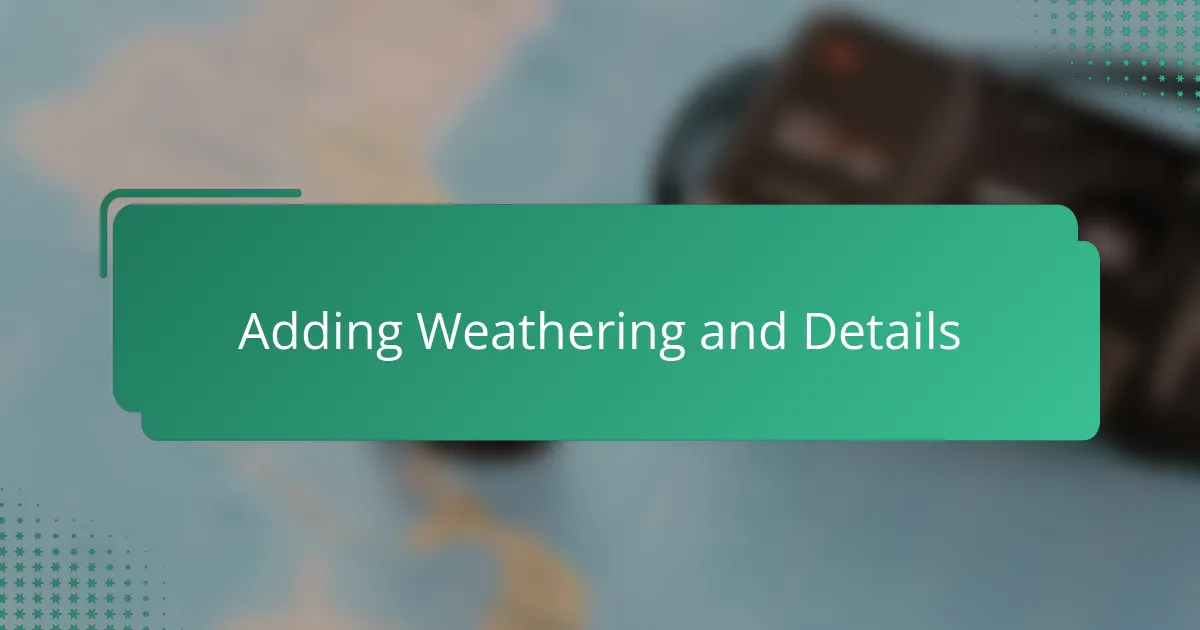
Adding Weathering and Details
Adding weathering and intricate details was where the blaster truly came to life for me. I started by lightly dry brushing metallic silver over edges and raised areas to mimic worn metal—little scratches and chips told the story of countless battles without saying a word. Have you ever noticed how just a few subtle marks can add layers of realism that a flat paint job simply can’t capture?
I also experimented with washes—thin, diluted paint that seeped into crevices to create shadows and grime. This technique felt like adding invisible dirt and age, turning a clean prop into something with history and grit. It was a game-changer for enhancing depth; suddenly, the blaster didn’t look new or toy-like anymore, but lived-in and authentic.
Sometimes, I stepped back and asked myself, “Does this detail tell a story or just add noise?” That question helped me decide when to stop and when to push further. Balancing weathering with clarity took patience, but seeing the final piece emerge with complexity and character made every moment worth it.
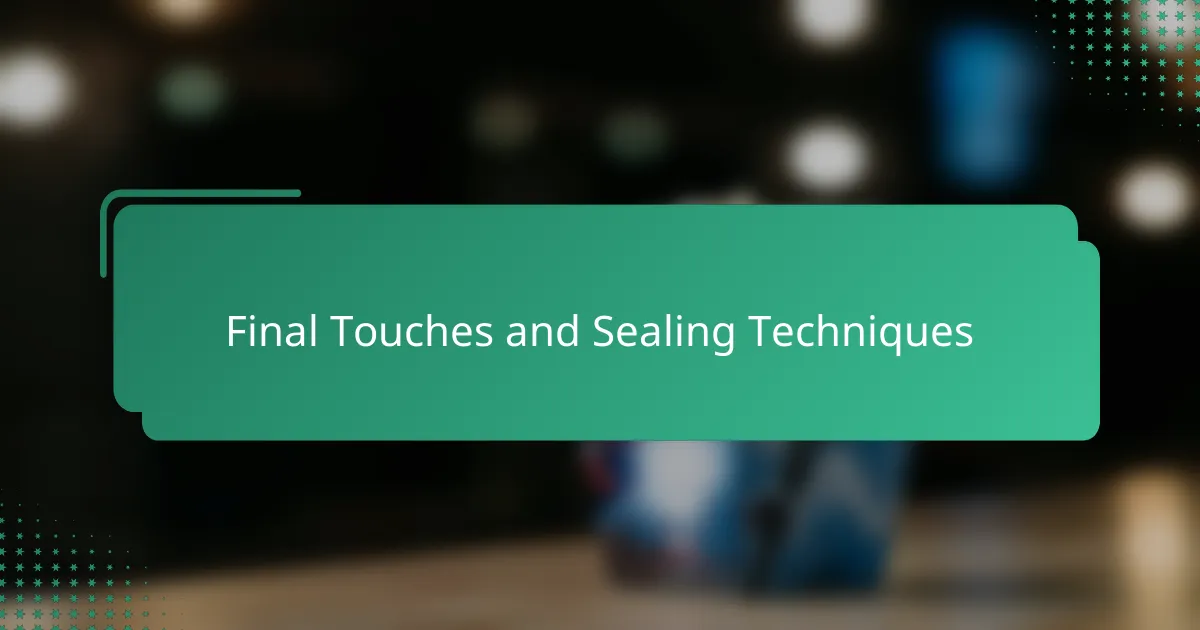
Final Touches and Sealing Techniques
Sealing the paint was my final mission—and honestly, it felt like putting a protective armor on my blaster. I went with a matte clear coat because it preserved all the weathering details without making the surface look shiny or plastic. Have you ever sealed a prop only to have it lose that gritty, battle-worn vibe? Choosing the right finish really matters.
Applying the sealer was nerve-wracking at first. One too many sprays and you risk pooling or streaks that ruin hours of work. I learned to mist it on lightly in several thin layers, allowing each to dry before the next. That slow build-up gave me control and confidence, and honestly, watching the colors deepen under the seal felt like the final “click” in bringing the blaster to life.
Sometimes, I added a touch of wax polish after sealing to smooth out any rough spots and enhance subtle metallic glints—just enough to catch the light without overdoing it. It’s those last thoughtful touches that make the blaster feel less like a project and more like a cherished artifact from the Star Wars universe. What sealing tricks have you found that protect but don’t overpower your paintwork?


